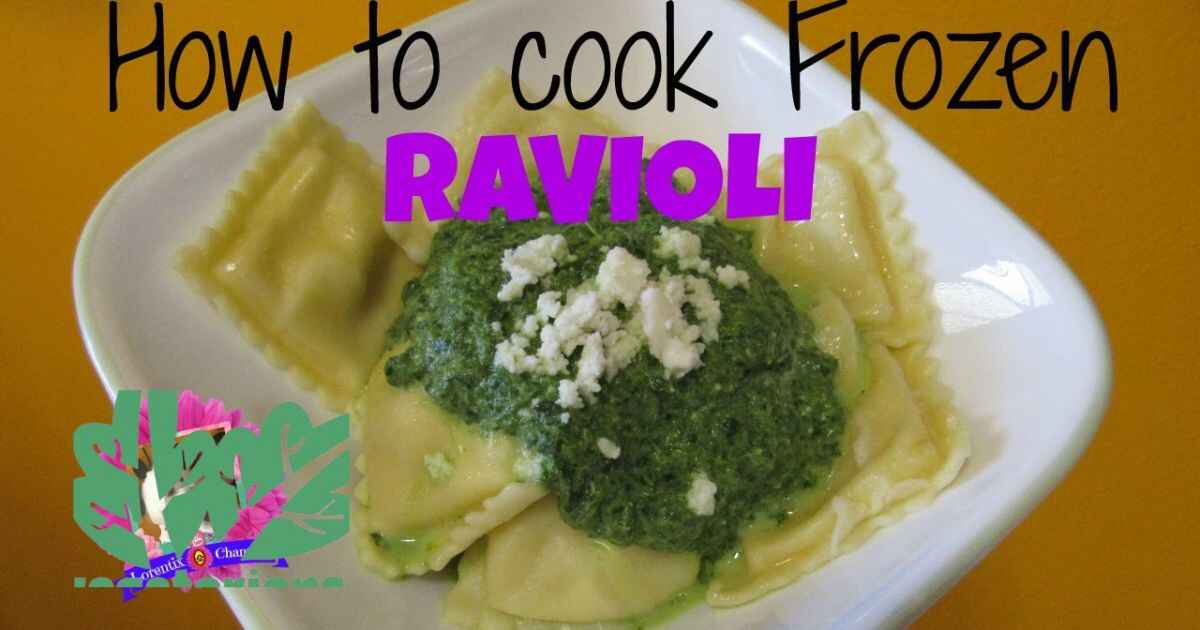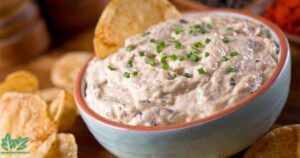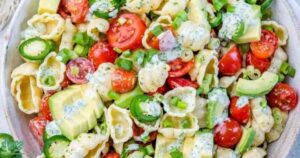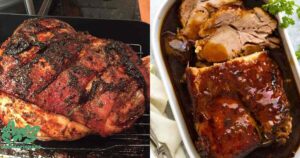Are you tired of spending hours in the kitchen preparing complicated meals? Do you crave the rich flavors of Italian cuisine but lack the time to make everything from scratch?
The solution is at your fingertips: frozen ravioli. This convenient pasta option can be a lifesaver for busy households, but many struggle with cooking it perfectly.
Overcooked, mushy ravioli or undercooked, chewy pasta can ruin your dining experience. Fear not! This comprehensive guide will teach you how to cook frozen ravioli to perfection, ensuring a delicious meal every time.
Cooking Frozen Ravioli
Ravioli, those delightful pillows of pasta filled with savory goodness, have been gracing Italian tables since the 14th century. Today, frozen ravioli offers a convenient way to enjoy this classic dish without the time-consuming process of making it from scratch.
The benefits of using frozen ravioli are numerous, from extended shelf life to the variety of fillings available at your fingertips.
When you choose frozen ravioli, you’re opting for a time-saving alternative that doesn’t compromise on taste. Modern freezing techniques preserve the flavor and texture of the pasta, making it a reliable option for quick and satisfying meals.
Whether you’re a busy professional, a parent on the go, or simply someone who appreciates a good meal without the fuss, mastering how to cook frozen ravioli can revolutionize your weeknight dinner routine.
Why Choose Frozen Ravioli?
Frozen ravioli is a game-changer for home cooks seeking convenience without sacrificing quality. The extended shelf life means you can always have a delicious meal option on hand.
Unlike fresh ravioli, which must be used within days, frozen varieties can last for months in your freezer. This longevity makes it an excellent choice for meal planning and last-minute dinner solutions.
Another advantage of frozen ravioli is the vast array of flavors and fillings available. From classic cheese to exotic truffle and mushroom combinations, there’s a frozen ravioli to suit every palate.
This variety allows you to experiment with different tastes without the need to prepare multiple fillings from scratch.
Whether you’re cooking for a family with diverse preferences or looking to expand your culinary horizons, frozen ravioli offers a world of possibilities at your fingertips.
Types of Frozen Ravioli
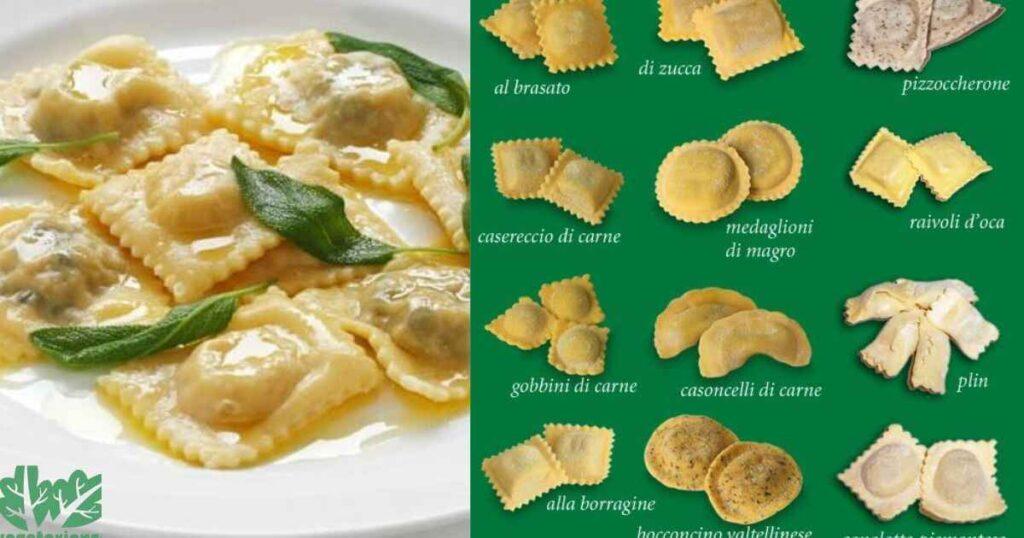
The world of frozen ravioli is diverse and exciting, offering a plethora of options to satisfy every taste bud. Cheese ravioli remains a timeless classic, often filled with a blend of ricotta, mozzarella, and Parmesan.
For meat lovers, varieties stuffed with seasoned ground beef or Italian sausage provide a hearty option.
Vegetarians can rejoice in the abundance of vegetable ravioli, featuring fillings like spinach and ricotta, butternut squash, or roasted red pepper.
Gourmet options have also made their way into the frozen aisle, with flavors like lobster, truffle, and wild mushroom catering to more sophisticated palates.
Some brands even offer whole wheat or gluten-free ravioli, ensuring that those with dietary restrictions can still enjoy this Italian favorite.
The shape and size of ravioli can vary too, from traditional squares to rounds and even whimsical shapes for themed dinners or children’s meals.
Ingredients & Equipment Needed
Preparing frozen ravioli doesn’t require an extensive list of ingredients or specialized equipment. However, having the right tools can make the process smoother and more enjoyable.
The essential items you’ll need include a large pot for boiling water, a colander for draining, and a slotted spoon for removing the ravioli from the water. Salt is crucial for seasoning the cooking water, enhancing the pasta’s flavor from the inside out.
For a basic preparation, these items are sufficient. However, if you’re looking to elevate your ravioli dish, consider having olive oil, garlic, and fresh herbs on hand. These ingredients can transform a simple pasta dish into a gourmet experience.
A good quality pasta sauce, whether homemade or store-bought, can also be a game-changer. Remember, the key to great ravioli lies not just in the cooking method but also in the quality of ingredients you pair it with.
Essential Cookware for Ravioli Preparation
Choosing the right cookware can significantly impact your ravioli cooking experience. A large, non-stick pot is ideal for boiling ravioli, as it prevents the pasta from sticking to the bottom and allows for easy stirring.
The pot should be deep enough to accommodate the ravioli and plenty of water, ensuring even cooking. A pasta spoon, with its curved edges and teeth, is perfect for gently stirring and removing ravioli without damaging the delicate pasta pockets.
A reliable kitchen timer is another invaluable tool when cooking frozen ravioli. Since cooking times can vary based on the brand and filling, having an accurate timer helps prevent overcooking.
A colander with small holes is essential for draining the ravioli without losing any in the process. For serving, consider investing in a wide, shallow pasta bowl that allows you to showcase your beautifully cooked ravioli and sauce.
Ingredients to Enhance Your Ravioli
While frozen ravioli is delicious on its own, adding a few key ingredients can elevate it to restaurant-quality status. Extra virgin olive oil drizzled over cooked ravioli adds a luxurious touch and prevents the pasta from sticking together.
Fresh garlic, sautéed until golden, creates a fragrant base for any sauce. Herbs like basil, parsley, or sage can be added fresh or cooked into the sauce, infusing the dish with aromatic flavors.
Parmesan cheese is a classic topping that adds a salty, umami flavor to ravioli. For a creamier texture, consider mixing in a dollop of ricotta or mascarpone cheese.
Red pepper flakes can add a pleasant heat, while a squeeze of lemon juice can brighten the overall flavor profile.
Don’t forget about vegetables; sautéed spinach, roasted cherry tomatoes, or grilled zucchini can add color, texture, and nutritional value to your ravioli dish.
How to Cook Ravioli From Frozen
Learning how to cook frozen ravioli is simpler than you might think. The process begins with preparing a large pot of water.
For every pound of ravioli, you’ll want to use about 4 quarts of water. This ensures the pasta has enough room to move freely as it cooks, preventing sticking and ensuring even cooking.
Bring the water to a rolling boil before adding salt. The water should taste like the sea – this seasons the pasta from the inside out.
Once your water is ready, it’s time to add the frozen ravioli. There’s no need to thaw them first; they can go straight from the freezer to the pot.
Gently add the ravioli to the boiling water, stirring occasionally to prevent them from sticking together or to the bottom of the pot.
The cooking time will vary depending on the size and filling of your ravioli, but it typically takes between 3 to 5 minutes. Keep a close eye on them, as overcooked ravioli can become mushy and fall apart.
Preparing the Water
The foundation of perfectly cooked ravioli lies in properly prepared water. Start by filling a large pot with cold water. The amount of water you use is crucial; too little, and the ravioli may stick together or cook unevenly.
A good rule of thumb is to use at least 4 quarts of water for every pound of ravioli. This generous amount of water helps maintain a consistent temperature when you add the frozen pasta.
Once your pot is filled, place it over high heat and bring it to a rolling boil. You’ll know it’s ready when you see large bubbles rapidly rising to the surface. At this point, add salt to the water.
Many cooks follow the guideline of adding 1 tablespoon of salt per quart of water. This may seem like a lot, but remember, most of this salt will go down the drain with the pasta water. The salted water enhances the flavor of the ravioli from the inside out as it cooks.
Adding Frozen Ravioli to the Pot
When your water is at a rolling boil and properly salted, it’s time to add the frozen ravioli. This step requires a bit of care to ensure the best results. Instead of dumping all the ravioli in at once, add them gradually.
This prevents a sudden drop in water temperature, which could lead to uneven cooking. As you add the ravioli, gently stir the water to keep them separated and prevent sticking.
Once all the ravioli are in the pot, you might notice that the water has stopped boiling. This is normal and nothing to worry about. Keep the heat high, and the water will return to a boil quickly.
During the cooking process, stir the ravioli gently every minute or so. This helps ensure even cooking and prevents the ravioli from sticking together or to the bottom of the pot.
Be careful not to stir too vigorously, as this could cause the delicate pasta to break open, releasing the filling into the water.
Determining Cooking Time
Knowing when your frozen ravioli is perfectly cooked is crucial to achieving that ideal al dente texture. Most packages will provide cooking instructions, which typically range from 3 to 5 minutes.
However, these are guidelines, and the actual cooking time can vary based on the size of the ravioli, the filling, and even your altitude. Start by setting a timer for the lower end of the suggested cooking time.
As the ravioli cooks, you’ll notice them start to float to the surface of the water. This is a good indicator that they’re nearly done, but it’s not a foolproof method.
The best way to check for doneness is to remove a single ravioli with a slotted spoon and cut it in half. The pasta should be tender but still firm to the bite, and the filling should be hot throughout.
If it’s not quite there, continue cooking and check every 30 seconds until you reach the desired texture.
Alternative Cooking Methods
While boiling is the most traditional method for cooking frozen ravioli, there are several alternative approaches that can yield delicious results.
Baking ravioli creates a crispy exterior and gooey interior, perfect for a comforting casserole-style dish. Air frying offers a healthier alternative to deep-frying, producing crispy ravioli with minimal oil.
Pan-frying is another excellent option, resulting in golden-brown ravioli with a satisfying crunch.
Each of these methods brings a unique texture and flavor profile to the dish, allowing you to vary your ravioli preparation based on your mood or the occasion.
Whether you’re looking for a crispy appetizer or a hearty baked dinner, these alternative cooking methods expand the possibilities of what you can do with a bag of frozen ravioli.
Let’s explore each of these methods in more detail to help you master the art of cooking frozen ravioli in various ways.
Baked Ravioli
Baked ravioli offers a delightful twist on the traditional boiled version, creating a dish that’s both comforting and exciting. To prepare baked ravioli, start by preheating your oven to 375°F (190°C).
In a large, oven-safe baking dish, spread a thin layer of your favorite pasta sauce. Arrange the frozen ravioli in a single layer over the sauce, then cover with more sauce and a generous sprinkle of cheese.
Mozzarella works well, but feel free to experiment with other types like Parmesan or fontina.
Cover the dish with foil and bake for about 30 minutes. Then, remove the foil and continue baking for another 10-15 minutes until the cheese is bubbly and golden brown.
This method allows the ravioli to cook in the sauce, absorbing its flavors while developing a slightly crispy top layer.
The result is a dish that’s perfect for family dinners or potlucks, offering the familiar comfort of ravioli with an exciting textural contrast.
Air Fryer Ravioli
Air frying has become increasingly popular, and it’s an excellent method for cooking frozen ravioli. This technique produces crispy ravioli with a fraction of the oil used in deep frying, making it a healthier alternative.
To air fry ravioli, start by preheating your air fryer to 350°F (175°C). Lightly brush or spray the frozen ravioli with oil to help them crisp up.
Arrange the ravioli in a single layer in the air fryer basket, being careful not to overcrowd them. Cook for about 8-10 minutes, shaking the basket halfway through to ensure even cooking.
The ravioli should be golden brown and crispy on the outside. Serve immediately with your favorite dipping sauce, such as marinara or a creamy Alfredo.
This method is perfect for creating a crunchy appetizer or a unique twist on a main course.
Pan-Fried Ravioli
Pan-frying offers another delicious way to prepare frozen ravioli, resulting in a crispy exterior that contrasts beautifully with the tender filling.
To pan-fry ravioli, start by heating a few tablespoons of olive oil in a large skillet over medium heat. While the oil is heating, bring a pot of salted water to a boil and cook the ravioli for about half the time recommended on the package.
This par-boiling step ensures the filling is heated through without overcooking the exterior.
Drain the ravioli well, then carefully add them to the hot oil in the skillet. Cook for 2-3 minutes on each side until they’re golden brown and crispy. Work in batches to avoid overcrowding the pan, which can lead to soggy ravioli.
Once crispy, remove the ravioli with a slotted spoon and drain on paper towels to remove excess oil. Serve immediately with a sprinkle of Parmesan cheese and your favorite sauce for dipping.
Sauces and Toppings for Frozen Ravioli
The beauty of frozen ravioli lies not just in its convenience, but also in its versatility when it comes to sauces and toppings.
While ravioli can be delicious with just a drizzle of olive oil and a sprinkle of Parmesan, pairing it with the right sauce can elevate it to a gourmet meal.
From classic marinara to rich Alfredo or vibrant pesto, the sauce you choose can complement the ravioli’s filling and transform the overall flavor profile of the dish.
When selecting a sauce for your ravioli, consider the filling. Cheese-filled ravioli pairs well with tomato-based sauces, while meat-filled varieties can stand up to heartier, cream-based sauces.
For vegetable-filled ravioli, a light butter sauce or olive oil-based dressing can enhance the natural flavors without overpowering them.
Remember, the sauce should complement, not overpower, the ravioli. Let’s explore some classic and creative sauce options to inspire your next ravioli dish.
Classic Tomato-Based Sauces
Tomato-based sauces are a classic pairing for ravioli, offering a bright, acidic contrast to the rich pasta filling. A simple marinara sauce, made with San Marzano tomatoes, garlic, and basil, is a timeless choice that lets the ravioli shine.
For those who enjoy a bit of heat, arrabbiata sauce adds red pepper flakes to the mix, creating a spicy kick that pairs well with cheese or meat-filled ravioli.
For a more indulgent option, consider a vodka sauce. This creamy tomato-based sauce, enriched with heavy cream and a splash of vodka, creates a velvety texture that clings beautifully to the ravioli.
The alcohol in the vodka helps to release flavors in the tomatoes that are otherwise inaccessible, resulting in a complex and satisfying sauce.
Whichever tomato-based sauce you choose, remember to heat it gently and toss the cooked ravioli in the sauce just before serving to ensure the pasta is well-coated but not overcooked.
Cream-Based Sauces
Cream-based sauces offer a luxurious complement to frozen ravioli, enveloping each pasta pocket in a rich, velvety coating. Alfredo sauce, a classic Italian-American creation, combines heavy cream, butter, and Parmesan cheese for a decadent flavor that pairs exceptionally well with cheese or chicken-filled ravioli.
For a lighter option, try a rosé sauce, which blends tomato sauce with cream for a beautiful pink hue and balanced flavor.
Carbonara, traditionally served with long pasta, can be adapted for ravioli to create a unique twist on the classic. This sauce, made with eggs, hard cheese, pepper, and crispy pancetta or bacon, forms a creamy coating when tossed with hot pasta.
When using it with ravioli, be sure to work quickly to prevent the eggs from scrambling. These rich, cream-based sauces are perfect for colder months or when you’re craving a comforting, indulgent meal.
Herb and Oil-Based Toppings
For a lighter touch that allows the flavors of the ravioli filling to shine, consider herb and oil-based toppings.
A classic aglio e olio preparation, featuring garlic sautéed in olive oil and often including red pepper flakes, can be a delicious and simple way to
dress your ravioli. This light coating enhances the pasta’s flavor without overshadowing the filling.
Herb butter is another delightful option that adds richness and aromatic notes to your ravioli. Simply melt butter in a pan and add fresh herbs like sage, thyme, or rosemary.
Let the herbs infuse the butter for a minute or two before tossing with your cooked ravioli. This method works particularly well with butternut squash or mushroom-filled ravioli, complementing their earthy flavors.
For a bright, zesty topping, consider a lemon garlic sauce. Sauté minced garlic in olive oil, add a splash of white wine if desired, and finish with fresh lemon juice and zest.
This light, citrusy sauce pairs beautifully with seafood-filled ravioli or cheese varieties. Sprinkle with fresh parsley for added color and flavor.
How to Boil Fresh Ravioli
While this guide focuses on how to cook frozen ravioli, it’s worth noting the differences when working with fresh ravioli. Fresh pasta cooks much faster than its frozen counterpart, typically requiring only 2-3 minutes in boiling water.
The process of preparing the water remains the same: bring a large pot of salted water to a rolling boil before adding the ravioli.
When cooking fresh ravioli, extra care is needed to prevent the delicate pasta from breaking. Gently lower the ravioli into the boiling water using a slotted spoon or spider strainer. Stir very gently to prevent sticking, being careful not to pierce the pasta.
Fresh ravioli will float to the surface almost immediately, but this doesn’t mean they’re fully cooked. Allow them to cook for the recommended time, then test one for doneness before draining.
Differences in Cooking Fresh and Frozen Ravioli
The main difference between cooking fresh and frozen ravioli lies in the cooking time and the delicacy of handling. Fresh ravioli, being more tender, requires a gentler touch and a shorter cooking time.
Frozen ravioli, on the other hand, is more forgiving and can withstand slightly rougher handling and longer cooking times without falling apart.
Another key difference is in water absorption. Fresh ravioli has a higher moisture content, so it absorbs less water during cooking. This means the pasta water will remain clearer when cooking fresh ravioli.
Frozen ravioli, being drier, will absorb more water, which can sometimes lead to a starchier pasta water. This starchy water, however, can be a boon when making sauces, as it helps the sauce cling to the pasta when added at the end of cooking.
Tips for Perfectly Cooked Fresh Ravioli
To achieve perfectly cooked fresh ravioli, timing is crucial. Start testing for doneness about a minute after the ravioli floats to the surface.
The pasta should be al dente – tender but still firm to the bite. Overcooking fresh ravioli can lead to a mushy texture and may cause the filling to leak out.
Handle fresh ravioli with care throughout the cooking process. Use a gentle hand when stirring to prevent the pasta from tearing.
When draining, consider using a spider strainer or slotted spoon to remove the ravioli from the water, rather than pouring everything into a colander.
This gentler method helps preserve the integrity of the delicate pasta. Once drained, toss the ravioli with your chosen sauce immediately to prevent sticking.
Storage & Reheating Instructions
Proper storage and reheating techniques are crucial for maintaining the quality of your cooked ravioli.
Whether you’ve made too much or want to prepare meals in advance, knowing how to store and reheat ravioli can save you time and ensure you enjoy delicious pasta even days after cooking.
When storing cooked ravioli, it’s important to cool it quickly to prevent bacterial growth. Once cooled, you can refrigerate or freeze the ravioli depending on when you plan to eat it.
Reheating requires care to avoid overcooking or drying out the pasta. Let’s explore the best practices for storing and reheating your ravioli to maintain its flavor and texture.
Proper Storage of Cooked Ravioli
To store cooked ravioli, first allow it to cool to room temperature. This should take no more than an hour; any longer risks bacterial growth. Once cooled, place the ravioli in an airtight container.
If you’ve already mixed the ravioli with sauce, you can store them together. However, if possible, store the sauce separately to prevent the ravioli from becoming soggy.
Refrigerated ravioli will keep for 3-5 days. For longer storage, freezing is an option. Place the cooled ravioli on a baking sheet lined with parchment paper, ensuring they’re not touching.
Freeze until solid, then transfer to a freezer-safe bag or container. Frozen cooked ravioli can last up to 2 months. Always label your containers with the date to keep track of freshness.
Reheating Methods for Optimal Taste
When it comes to reheating ravioli, there are several methods to choose from, each with its own advantages. The microwave is the quickest option, but it can sometimes lead to uneven heating or a slightly rubbery texture.
To microwave, place the ravioli in a microwave-safe dish, add a splash of water or extra sauce to prevent drying, cover, and heat in 30-second intervals, stirring between each until hot.
For better results, consider reheating on the stovetop. Place the ravioli in a pan with a little water or sauce, cover, and heat gently over medium-low heat, stirring occasionally until warmed through. This method helps maintain the texture of the pasta better than microwaving.
Oven reheating is ideal for larger portions or when reheating ravioli with sauce. Preheat your oven to 350°F (175°C), place the ravioli in an oven-safe dish.
Add a splash of water or extra sauce, cover with foil, and heat for about 15-20 minutes or until hot throughout. This method helps redistribute heat evenly, maintaining the quality of your dish.
Read This Blog: Danae Hays Net Worth: Height, Age, Bio, Family
Nutritional Information and Dietary Considerations
Understanding the nutritional content of frozen ravioli can help you make informed decisions about incorporating it into your diet.
While specific values can vary depending on the brand and filling, ravioli generally provides a good source of carbohydrates and protein. However, it can also be high in calories and fat, especially cheese-filled varieties.
Also Read This Blog: Kris Lindahl Net Worth – A Detailed Look at His Wealth and Success
For those with dietary restrictions, there are increasingly more options available in the frozen ravioli market. Whole wheat ravioli offers more fiber than traditional varieties, while gluten-free options cater to those with celiac disease or gluten sensitivity.
Vegan ravioli, filled with plant-based ingredients, is also becoming more common. Always check the packaging for specific nutritional information and ingredients to ensure the product meets your dietary needs.
Calorie and Macronutrient Breakdown
The calorie and macronutrient content of ravioli can vary significantly based on the filling and serving size. On average, a 1-cup serving (about 220g) of cheese-filled ravioli contains approximately:
- Calories: 220-250
- Carbohydrates: 30-35g
- Protein: 10-12g
- Fat: 7-9g
- Fiber: 2-3g
Remember that these values are for the ravioli alone and don’t include any sauce or additional toppings. Adding sauce can significantly increase the calorie and fat content of the meal.
For a more balanced dish, consider pairing ravioli with a side salad or steamed vegetables to increase the fiber and nutrient content of your meal.
For those following special diets, there are several ways to adapt ravioli dishes to meet your needs. If you’re watching your calorie intake, opt for ravioli with vegetable fillings instead of cheese or meat, and choose tomato-based sauces over cream-based ones.
For a lower-carb option, try using zucchini ribbons or spaghetti squash as a base and top with a few ravioli for flavor.
Gluten-free ravioli is now widely available, made with alternative flours like rice or corn. For those following a vegan diet, look for ravioli filled with vegetables or plant-based cheese alternatives.
You can also make your own vegan ravioli using wonton wrappers and a plant-based filling.
Frequently Asked Question
Why is My Ravioli Floating Immediately?
If your frozen ravioli floats to the surface of the boiling water immediately after adding it to the pot, don’t panic. This is actually quite normal and doesn’t necessarily indicate that the ravioli is fully cooked. The phenomenon occurs due to the air pockets within the ravioli and the density difference between the pasta and the water.
When frozen ravioli is added to boiling water, the outside begins to thaw and cook immediately. This rapid change can cause the ravioli to float, even if the center is still frozen.
The key is to follow the recommended cooking time on the package, regardless of when the ravioli starts to float. To ensure even cooking, gently stir the ravioli occasionally, pushing the floating pieces back into the water. Always test a piece before draining to confirm it’s cooked through.
How Do I Prevent Ravioli from Bursting?
Preventing ravioli from bursting is crucial for maintaining the integrity of your dish. The most common cause of bursting is overcooking, which weakens the pasta and allows the filling to escape.
To avoid this, carefully follow the cooking instructions and start testing for doneness on the earlier side of the recommended cooking time.
Another tip is to avoid rapid temperature changes. Add the frozen ravioli to water that’s already at a rolling boil, and avoid overcrowding the pot. Too many ravioli at once can lower the water temperature dramatically, leading to uneven cooking.
Stirring gently and occasionally helps prevent the ravioli from sticking to each other or the bottom of the pot, which can cause tearing. Lastly, when draining, use a slotted spoon or spider strainer instead of pouring everything into a colander, as the weight of the water can sometimes cause delicate ravioli to burst.
Can You Overcook Ravioli?
Yes, it is possible to overcook ravioli, and doing so can significantly impact the quality of your dish. Overcooked ravioli becomes mushy, loses its shape, and may burst, allowing the filling to escape into the cooking water. This not only affects the texture but also dilutes the flavor of the dish.
To avoid overcooking, set a timer for the minimum suggested cooking time on the package. Start testing for doneness at this point by removing a single ravioli and cutting it in half. The pasta should be tender but still have a slight firmness when bitten – this is what Italians refer to as “al dente.”
If it’s not quite there, continue cooking and check every 30 seconds until you reach the desired texture. Remember, the ravioli will continue to cook slightly after draining due to residual heat, so it’s better to err on the side of slightly undercooked than overcooked.
Conclusion
Mastering how to cook frozen ravioli opens up a world of quick, delicious meal options. From the classic boiling method to creative alternatives like baking and air frying, frozen ravioli proves to be a versatile ingredient suitable for various cooking styles and dietary needs.
Remember, the key to perfect ravioli lies in not overcooking and pairing it with complementary sauces and toppings.
Whether you’re a busy professional looking for a quick dinner solution or a culinary enthusiast exploring new recipes, frozen ravioli can be your canvas for creating satisfying meals.
Don’t be afraid to experiment with different cooking methods, sauces, and add-ins to find your perfect ravioli dish. With the tips and techniques shared in this guide, you’re well-equipped to elevate this convenient pasta option into a gourmet experience. Enjoy your ravioli adventures, and buon appetito!

Ethan Henry with 8 years of expertise in bamboo, excels in sustainable design, construction and product development. His passion for eco-friendly solutions has driven innovative advancements in bamboo-based industries.
